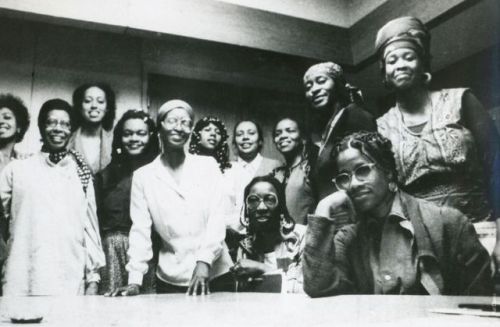Different States Of Matter: [submission]
![Different States Of Matter: [submission]](https://64.media.tumblr.com/0047b9a21a91265fce9bae54fb2e5fe6/tumblr_oisvocVZu91v2useeo1_400.gif)
![Different States Of Matter: [submission]](https://64.media.tumblr.com/f5e9ba2dc3162323e4c17d19895c69a6/tumblr_oisvocVZu91v2useeo2_500.gif)
![Different States Of Matter: [submission]](https://64.media.tumblr.com/a1cbaf94e9b0d210a5beb5328909d54b/tumblr_oisvocVZu91v2useeo3_500.gif)
![Different States Of Matter: [submission]](https://64.media.tumblr.com/f193a9a1ab556d027b2736af0b648ae7/tumblr_oisvocVZu91v2useeo4_500.gif)
Different States of Matter: [submission]
More Posts from The-grey-areas-blog and Others

http://www.sciencemadesimple.co.uk/news-blogs/wendy-awarded-an-mbe
Science getting recognised, and I’m so happy. The second link is Wendy Sadler who is being awarded an MBE. She’s the founding director of science made simple, a Welsh program to help get kids involved and excited by science after they realised our education system tended to have the opposite effect. According to her colleagues, she’s not only an amazing scientist but incredibly dedicated to inspiring a new generation to follow their curiosities.
Talent 2030 hosts an annual competition for girls aged 11-18 in the UK to involve themselves in the future of engineering. This year I entered with an essay on the use of engineering to cure cancer, and thought I’d provide the article links I used for research. It’s actually a really interesting topic to delve into if you’re curious
http://www.popsci.com/fda-approves-first-drug-that-treats-cancer-with-an-engineered-virus
http://fusion.net/story/155183/herpes-fights-cancer-virotherapy-measles-smallpox-cure-cancer/
https://www.standup2cancer.org/dream_teams/view/bioengineering_and_clinical_applications_of_circulating_tumor_cell_chip
https://www.scientificamerican.com/article/a-chip-against-cancer/
![[Mitosis In Garlic Roots]](https://64.media.tumblr.com/8f107e97d6549ff315eb6aff14b4137e/tumblr_ohvmnvR8NM1vj7kdmo1_500.jpg)
![[Mitosis In Garlic Roots]](https://64.media.tumblr.com/adbd5e46f3bb41ed49c870158b591cbe/tumblr_ohvmnvR8NM1vj7kdmo2_500.jpg)
![[Mitosis In Garlic Roots]](https://64.media.tumblr.com/1e2b58752ded37c7d73d65f71b0b5ede/tumblr_ohvmnvR8NM1vj7kdmo3_500.jpg)
![[Mitosis In Garlic Roots]](https://64.media.tumblr.com/29d207c139caf42101f9a9454a18507b/tumblr_ohvmnvR8NM1vj7kdmo4_500.jpg)
[Mitosis in garlic roots]
Crash Course (Mitosis; Splitting Up Is Complicated)

In early 1971, Kay Brown, Dindga McCannon, and Faith Ringgold gathered a group of black women at McCannon’s Brooklyn home to discuss their common frustrations in trying to build their careers as artists. Excluded from the largely white downtown art world, as well as from the male-dominated black art world, the women found juggling their creative ambitions with their roles as mothers and working heads of households left little time to make and promote their art.
Out of this initial gathering came one of the first exhibitions of professional black women artists. “Where We At”—Black Women Artists, 1971, opened at Acts of Art Gallery in the West Village that June. Adopting the show’s title as their name, the collective began meeting at members’ homes and studios, building support systems for making their work, while assisting each other with personal matters such as childcare.
Influenced by the Black Arts Movement, members worked largely in figurative styles, emphasizing black subjects. While the group engaged politically with racism, their work also spoke to personal experiences of sexism, and members contributed to publications including the Feminist Art Journal and Heresies. Though the group’s mission was not explicitly feminist, Where We At recognized the power of collectivity—empowering black women by creating a network to help attain their professional goals as artists.
Keep reading
I struggle to understand why other white people refuse to realise they're racist. You can be at every rally, supporting every cause, it doesn't matter. We were raised to be inherently racist, and the sooner you face up to that the sooner you can actually work on solving the problems. Prejudice is automatic in most of our upbringings, and if you're living your life saying 'oh but I'm not racist', you're never actually gonna get rid of those prejudices.

Why are people so surprised north korea was able to build a weapon of that range. That's literally their main point of funding. Maybe if the USA and Europe stopped underestimating other countries out of their own supremacist values, we wouldn't be in this position



The First Dinosaur Tail Found Preserved in Amber is Covered in Feathers
-
 animasmagic reblogged this · 1 year ago
animasmagic reblogged this · 1 year ago -
 salem876 liked this · 3 years ago
salem876 liked this · 3 years ago -
 wizard32 liked this · 3 years ago
wizard32 liked this · 3 years ago -
 empress-93 reblogged this · 3 years ago
empress-93 reblogged this · 3 years ago -
 aim2plzuuuuu liked this · 3 years ago
aim2plzuuuuu liked this · 3 years ago -
 blkpanther13 liked this · 3 years ago
blkpanther13 liked this · 3 years ago -
 briefly-noted reblogged this · 3 years ago
briefly-noted reblogged this · 3 years ago -
 hjlphotos liked this · 3 years ago
hjlphotos liked this · 3 years ago -
 binary-god liked this · 3 years ago
binary-god liked this · 3 years ago -
 drainage-for-angels liked this · 3 years ago
drainage-for-angels liked this · 3 years ago -
 princely1 reblogged this · 3 years ago
princely1 reblogged this · 3 years ago -
 scarlett-rose-blog reblogged this · 4 years ago
scarlett-rose-blog reblogged this · 4 years ago -
 scarlett-rose-blog liked this · 4 years ago
scarlett-rose-blog liked this · 4 years ago -
 viniciusleal2121 reblogged this · 4 years ago
viniciusleal2121 reblogged this · 4 years ago -
 viniciusleal2121 liked this · 4 years ago
viniciusleal2121 liked this · 4 years ago -
 coffee-math-chamomile liked this · 4 years ago
coffee-math-chamomile liked this · 4 years ago -
 butterblogde liked this · 4 years ago
butterblogde liked this · 4 years ago -
 andrea-diamante liked this · 4 years ago
andrea-diamante liked this · 4 years ago -
 manuelfergarmo liked this · 4 years ago
manuelfergarmo liked this · 4 years ago -
 devonnce liked this · 4 years ago
devonnce liked this · 4 years ago -
 baseiam liked this · 4 years ago
baseiam liked this · 4 years ago
'We're a grey area in a world that doesn't like grey areas'
48 posts

